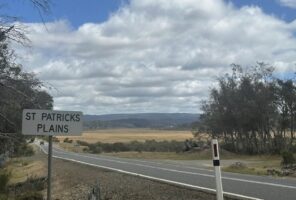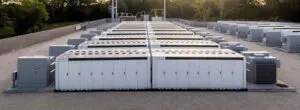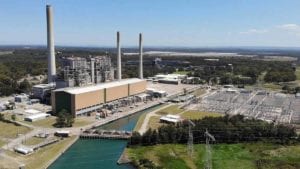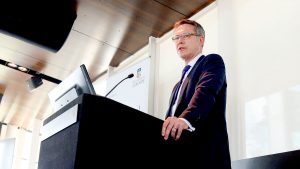One of the very big questions for the Australian electricity market in 2024 will be the actual closure date for the country’s biggest coal generator, the 2.88 GW Eraring facility on NSW’s central coast.
Will it close as currently scheduled in August, 2025, or won’t it? Will the NSW government and Eraring owner Origin Energy come to an agreement to keep at least some of its units open for a few more years? Or will state energy minister Penny Sharpe use her newly awarded powers to force it to stay open, like it or not?
These are big issues, both in the practical sense – will the lights actually stay on without Eraring, and has there been enough wind, solar and storage built in the meantime – and the symbolism, or the vibe: What does an Eraring closure delay say about the state of the green energy transition?
It was clear from the moment that NSW Labor looked like it was going to win government in this year’s election that it wished it had the power to keep Eraring open, or even owned it. In fact, it struggled to believe or understand it didn’t.
It looked on with envy as other states that did own stuff, such as Western Australia which decided to keep one of the ageing Muja coal units in reserve for another summer, just in case, or Queensland, where now premier Stephen Miles boasted it could simply tell one of its coal generators to stay open if the grid wasn’t ready.
Sharpe decided to do something about, and with the agreement of other state ministers has rolled out the Orderly Exit Mechanism that allows her (or any other state energy minister) to order a coal plant to stay on, if needed by the grid and if negotiations with the plant owner come to nothing.
Crucially, those new powers have been back-dated to early 2021, which means it covers the Eraring closure announcement. And that, surely, has created a new dynamic in the lengthy talks with Eraring owner Origin Energy over its future.
Crunch time is approaching: Origin has suggested that it needs to make a final decision 18 months ahead of the planned closure date, mostly for the sake of its workers and their plans, but also for maintenance and supplies and other issues such as the near overflowing ash dam.
It’s not a hard deadline, but it’s an important one. Any decision much later than that will look like a government, and a grid in crisis.
Many energy analysts insists that there is no longer a reliability gap in the grid, and Eraring is not needed, pointing to the recent success of the Capacity Investment Mechanism that secured 1075 MW and 2.9 GWh of new battery storage and demand management, and other projects like the 1680 MWSh Waratah Super Battery.
Sharpe has demurred, telling journalists last week as she fronted the media to suggest, in what seemed a pointed highlighting of a looming supply crunch, to dial down unnecessary appliances as the state headed into its first hot working day of what will be a challenging summer.
Sharpe said there is still a reliability gap. But is there?
A new report from the Australian Energy Market Operator, the Energy Security Target (EST) Monitor Report, has been quietly published on the NSW government website in the last week. It provides some fascinating new insights into the reliability equation.
Like many AEMO forecasting reports, it hedges its bets.
It starts off by saying that there is a reliability gap from 2025/26, although it also points out that those same newly-completed tenders cited by analysts will effectively close it. But it also suggests that any delays in the construction of those projects could leave a problem in 2025/26.
Its central scenario points to a reliability gap of more than 800 MW from 2025/26. But that scenario does not include the recent tenders, most notably the results of the Capacity Investment Scheme that was only announced a few weeks ago, and other “actionable” projects.
In a special update requested by the NSW Government, AEMO says these new batteries – notably the Orana (400 MW and 1600 MWh), Liddell (500 MW and 1,000 MWh) and Smithfield (65MW and 130 MWh) batteries – will eliminate that gap from 2025/26.
But then AEMO provides another caveat, or sensitivity – the potential delays to completion, connection and full commissioning of these assets. In this sensitivity, AEMO suggests there will be a gap for the 2025/26 year only (see table above).
Here is what it says:
“Consistent with the Central scenario, an EST breach is identified in 2025-26 when development delays are applied, following the retirement of Eraring Power Station. While numerous anticipated projects and Tender 2 recipient projects (those big batteries) are targeting completion in advance of Summer 2025-26, default delays apply this capacity in the 2026-27 year. When these projects are assumed to commission at the commissioning target dates advised, the EST breach is no longer forecast to occur. From 2026-27, an EST surplus is projected, which grows over the remainder of the horizon as further developments as part of Tender 3 are considered.”
Might we see an Eraring extension, of maybe a single 720 MW unit, or two, for one more summer? Intriguingly, AEMO also models a two-year extension to Eraring, of just two units. This, of course, solves the problem, but this was presumably done before the battery tender.
In essence, Sharpe and her advisors are going to have to make a judgment about risk, which is not what a politician wants to hear, particularly going into the next state election in early 2027.
Politicians don’t like to have the threat of blackouts and soaring prices as they go to the polls, but nor will they want to be judged on a perceived failure to manage the transition in good time.
Matt Kean, the former Coalition energy minister and Treasurer who masterminded the renewable infrastructure roadmap that is designed to fill the gap to be created by ageing and unreliable coal plants, says he is unsettled by Sharpe’s new powers, and like many in the energy industry will be outraged an extension.
He describes the potential cost of keeping it open – to be decided the regulator if extended under a ministerial decree – as a new tax on consumers.
“This is a sneaky tax on NSW energy bills that will see households and businesses pay to prop up unneeded and unreliable coal fired power stations,” he said.
Tim Buckley, the head of Climate Energy Finance, suggests the state government should appoint a “coordinator general” to find out who are the “road-blockers” in NSW Planning preventing approvals of new replacement capacity for NSW.
“When was the last NSW wind farm approved?” he asked? Well, actually, March 2021 with the Uungula wind project now owned by Andrew Forrest’s Squadron Energy, and which this week was declared a winner of the government’s latest generation tender.
As it turns out, another wind farm – Hills of Gold – also got planning approval but needs to get the green tick from the Independent Planning Commission, which this week gave approval for two new solar projects. But none of these will be built in time.











